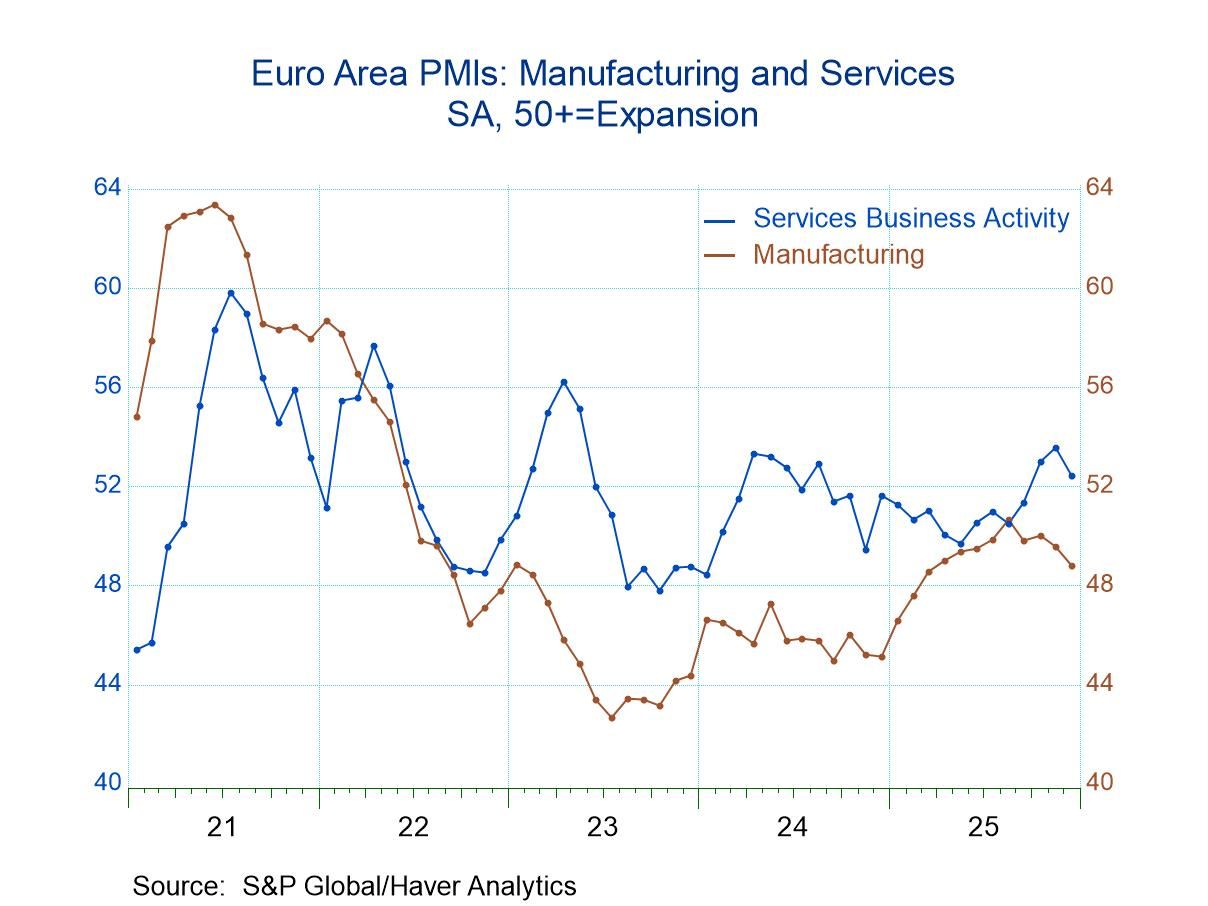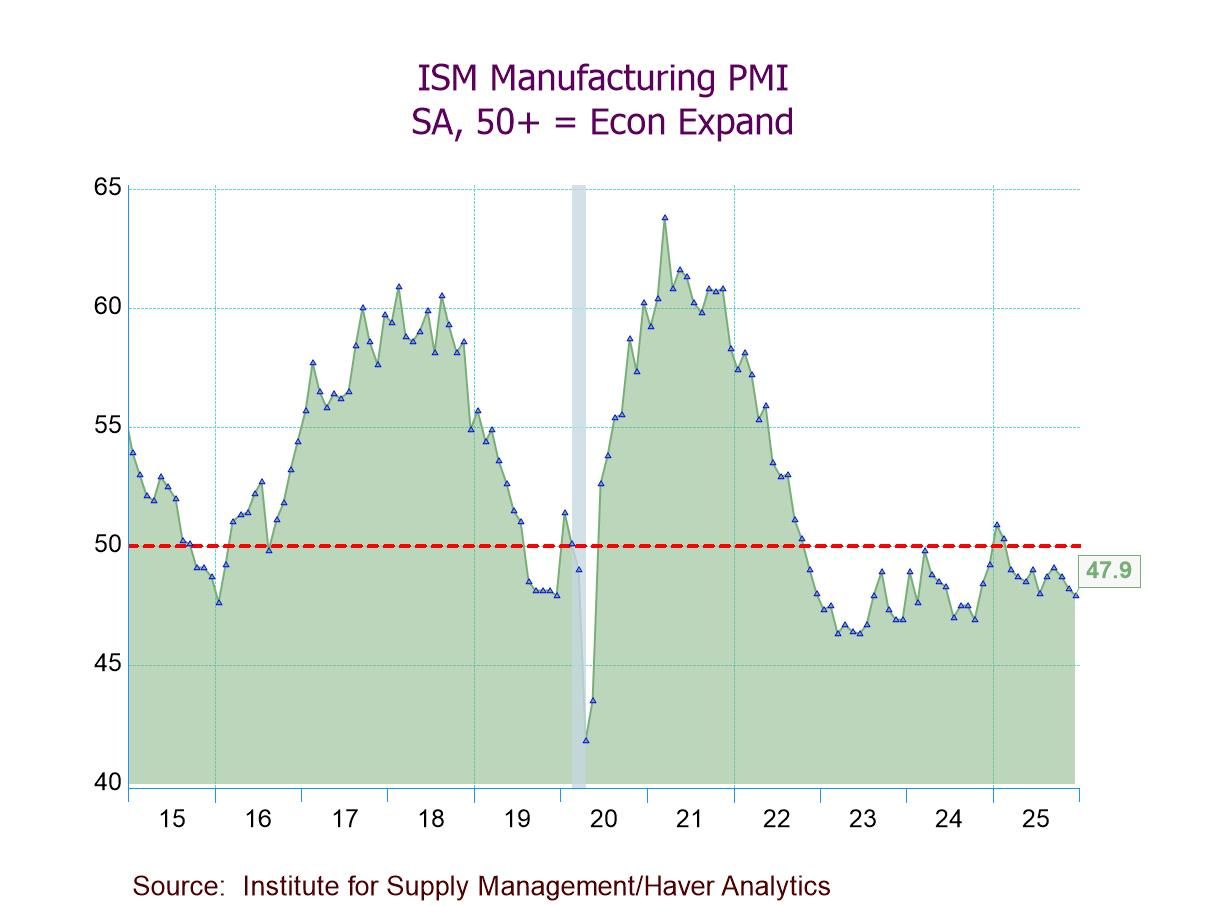Texas Manufacturing Activity Improves in February
by:Tom Moeller
|in:Economy in Brief
Summary
- General business activity index recovers January decline.
- Production, shipments & employment strengthen.
- Price & wage indexes remain weak.


The general business activity index in the Texas Manufacturing Outlook Survey conducted by the Federal Reserve Bank of Dallas rose to -11.3 this month after falling to -27.4 during January. It has been negative since May 2022. An increased 11.0% of respondents reported improved business activity this month while a lessened 22.3% of respondents reported a worsening of conditions. The company outlook index in six months of -8.5 in February compared to -18.2 in January. Data were collected between February 13-21 from 92 Texas manufacturers.
In the survey of current conditions, the production index rose to 1.0 from -15.4. The shipments series improved to 0.1 after having been negative for 15 months. The employment reading rose to 5.9 from -9.7. A higher 18.4% of respondents reported more hiring while a lessened 12.5% reported a decline. The hours-worked measure rose to -7.0 from -11.8. The wages & benefits index eased to 20.1. The growth rate of new orders index of -5.5 in February compared to -14.4 in January. A greater 18.2% of respondents reported higher orders growth while a lessened 23.7% reported declines. The delivery time series held steady at 8.0, indicating faster product delivery speeds.
Inflation indicators remained weak this month. The index of prices received for finished goods stayed low at 0.8 compared to 0.1 and remained near its lowest reading in over three years, down from a high of 51.3 in October 2021. A lessened 11.4% of respondents reported raising prices while a reduced 10.6% reported lowering prices. The index of prices paid for raw materials fell to 15.4 this month from 20.2 in January and remained well below its 84.2 high in November 2021.
Expectations for future manufacturing activity improved. The future general business activity index of 6.2 compared to -10.4 in January. It remained up from a low of -27.5 in June 2022. The future production index rose to 22.4, but has been trending sideways for a year. The future orders growth index rose sharply to its highest level since March 2022. The future employment index rose modestly to its highest level in seven months. The future hours-worked index series turned positive. The expected wages & benefits reading moved sideways and remained well below its February 2022 high. The future capital spending measure rose sharply from an eight month low.
Each index is calculated by subtracting the percentage reporting a decrease in activity from the percentage reporting an increase. When all firms report rising activity, an index will register 100. An index will register -100 when all firms report a decrease. An index will be zero when the number of firms reporting an increase equals the number reporting a decrease. Data for the Texas Manufacturing Outlook, conducted by the Federal Reserve Bank of Dallas, can be found in Haver's SURVEYS database.


Tom Moeller
AuthorMore in Author Profile »Prior to joining Haver Analytics in 2000, Mr. Moeller worked as the Economist at Chancellor Capital Management from 1985 to 1999. There, he developed comprehensive economic forecasts and interpreted economic data for equity and fixed income portfolio managers. Also at Chancellor, Mr. Moeller worked as an equity analyst and was responsible for researching and rating companies in the economically sensitive automobile and housing industries for investment in Chancellor’s equity portfolio. Prior to joining Chancellor, Mr. Moeller was an Economist at Citibank from 1979 to 1984. He also analyzed pricing behavior in the metals industry for the Council on Wage and Price Stability in Washington, D.C. In 1999, Mr. Moeller received the award for most accurate forecast from the Forecasters' Club of New York. From 1990 to 1992 he was President of the New York Association for Business Economists. Mr. Moeller earned an M.B.A. in Finance from Fordham University, where he graduated in 1987. He holds a Bachelor of Arts in Economics from George Washington University.




 Global
Global

